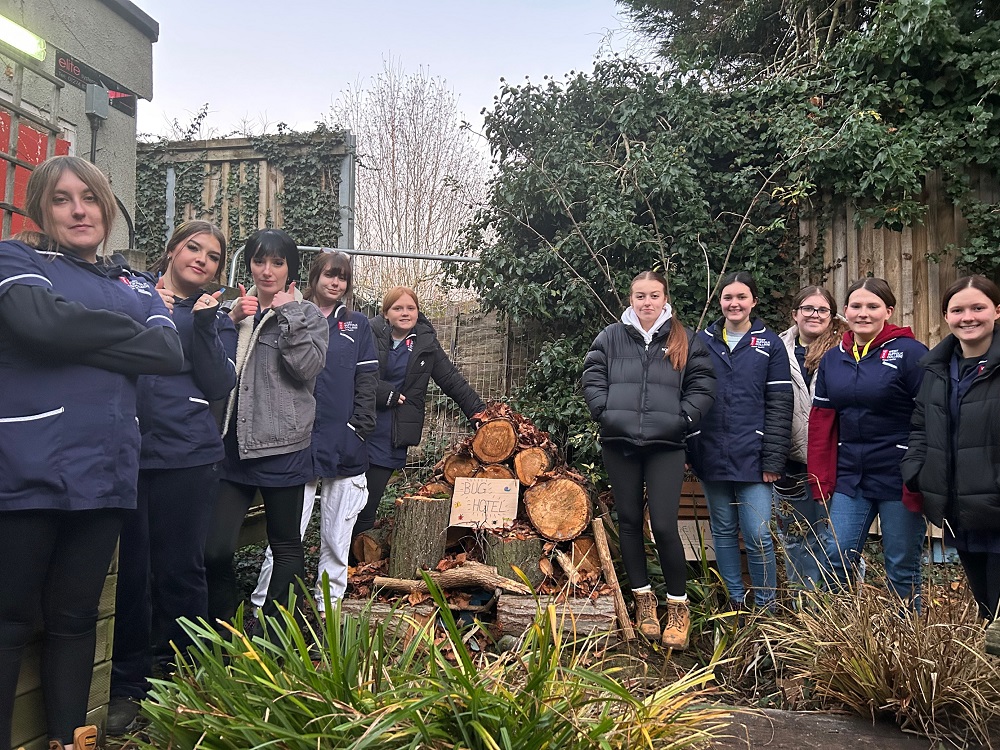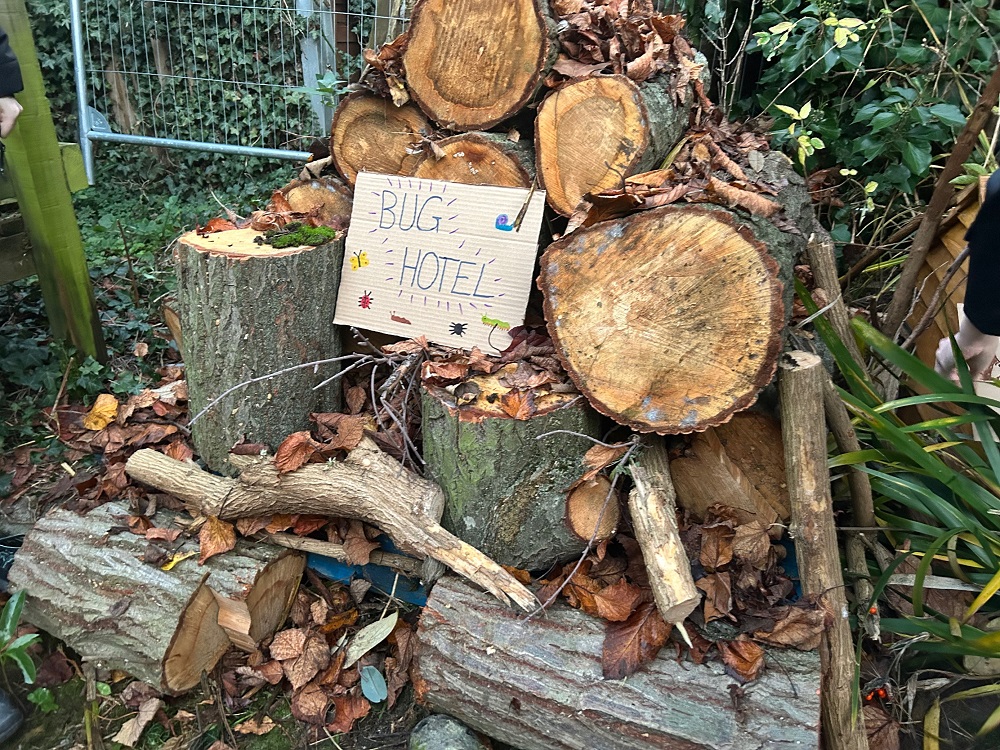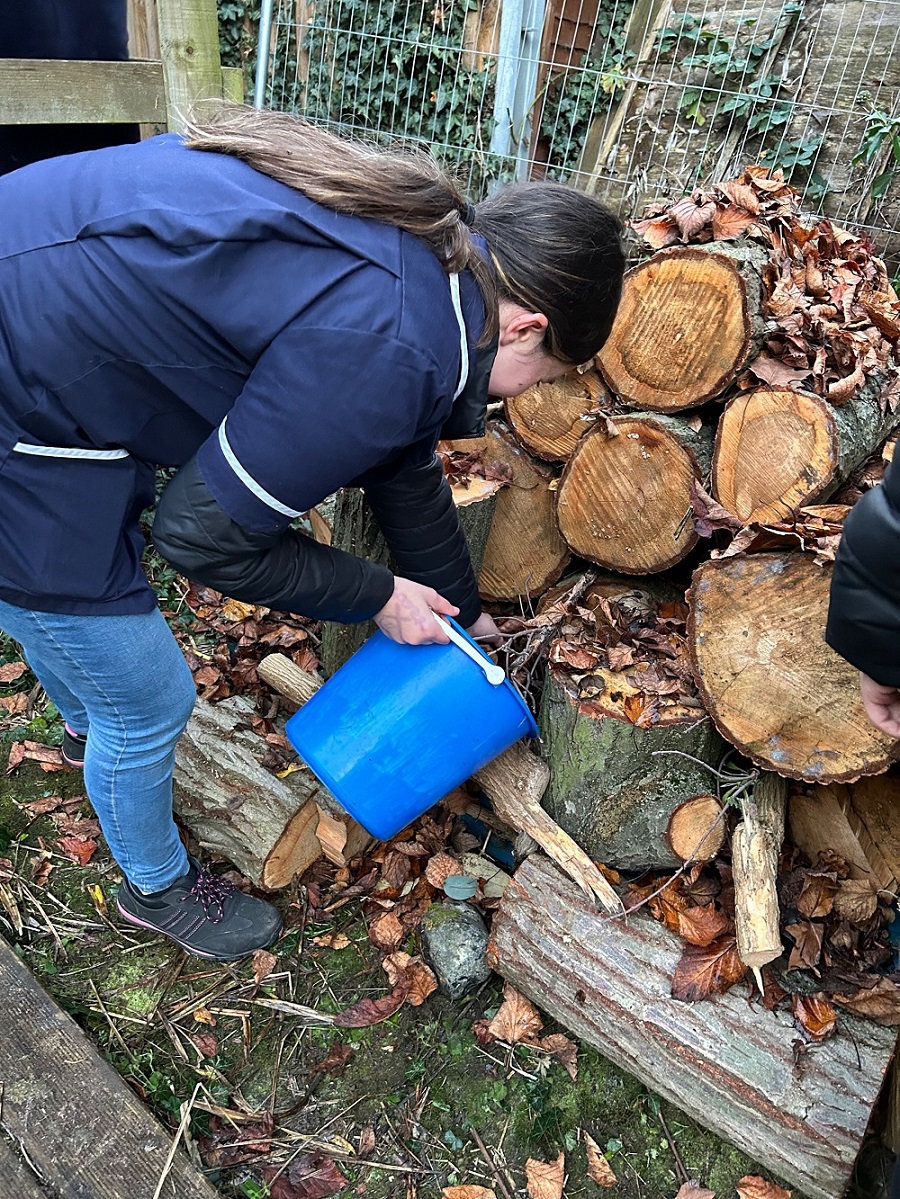 Pictured is the five-star bug hotel made by students that's the talk of the town among the invertebrate population.
Pictured is the five-star bug hotel made by students that's the talk of the town among the invertebrate population.
Students have been busy building a spectacular bug hotel at West Suffolk College, in a mission to become a Hedgehog Friendly Campus.
Bug hotels encourage invertebrates and insects - a good source of food for hedgehogs - and can also be used as a home for them to nest. They can also attract frogs, toads, solitary bees, bumblebees and ladybirds, all of whom also act as natural pest controllers, and the latter eating between 20 to 25 aphids per day.
Students built their bug hotel using locally sourced logs on campus. When a tree fell down during a recent storm, our Animal Studies tutors were quick to ask the tree surgeons (via our Health and Safety department) if they could chop up some pieces for a bug hotel instead of turning it all into woodchips. They were extremely happy to help and the result was spectacular as you can see in the pictures.
By sourcing the wood from on campus, we’re keeping it truly sustainable and helping to promote great Green Skills among our students.
Bugs and insects have already been moving in, and we're the must-visit destination for all our tiny visitors coming to beautiful Bury St Edmunds.
Find out more about Hedgehog Friendly Campus.
How to make your own bug hotel
Bugs keep the cycle of life in the garden running smoothly so it is wise to welcome them in with open arms. Watch the video for a tutorial on creating your own bug hotel to offer shelter for these hard-working garden visitors.
Log-style bug hotel

Our students have made a log-style bug hotel. You will need logs! It is important to choose them from a sustainable source. Purchasing timber from large online merchants defeats the point of building an eco habitat as most large wood merchants source wood from forestation projects. To source local logs, chat to a local tree surgeon who will most likely be more than happy to give free to low cost logs. Hardwoods such as ash, oak, and beech are particularly great for rehoming wildlife. Try to pick some larger logs that have the bark on the outside as well as wildlife tend to love bark. You can also intersperse or have an area for smaller logs and branches. Of course, you can get quite creative if you want!
There are a few ways of building log piles depending on what you want from them. If it was a log pile purely for drying out logs then aeration is key, however, if the aim is to encourage wildlife then you want aeration but also some nice hidey holes for them to reside. Building the store is quite easy and once you have decided on the structure you just need to make sure that you stack them securely.
- A neat pile: This could be a stacked square or a triangle shape of logs. Both of these work really well. Pile the logs neatly on top of each other to form a pyramid or square. If you decide on the triangle shape, stack large ones at the bottom leading to smaller at the top
- A bit higgledy-piggledy: Stack them any old how but make sure they won't roll. This is the natural way to do it but it doesn’t create much shade and looks messy.
- Norwegian style: Norwegian log piles tend to be round and super neat, google it and take a look! If you are someone who loves Scandinavian style or is a neat freak then this is probably just for you.
Other ways to make a bug hotel using sustainable materials
Useful tips
- Bug hotels can be made from salvaged and natural materials, such as prunings, sticks, bricks and old pieces of wood and so is the ultimate in recycling.
- The secret to making a good bug hotel is in providing a variety of materials and creating gaps of differing sizes to suit the needs of a variety of insects.
- The simplest bug hotels provide a dry, sheltered space, in which bedding materials are stuffed. More complicated hotels may be created with a wider variety of materials, stacked together which will draw in the widest range of insects.
- Various materials will attract different insects. Decaying wood is likely to attract wood boring bugs and centipedes, whereas bark is perfect for woodlouse and millipedes.
- To tempt in beetles pack in plenty of twigs and branches.
- Bees and hover flies love hollow stems and spiders will happily make a home in any dry environment.
- Ladybirds love to hibernate in hollow stems so don’t clear away those end of season garden trimmings in too much of a hurry.




Follow Us
Stay up-to-date on the latest news & events